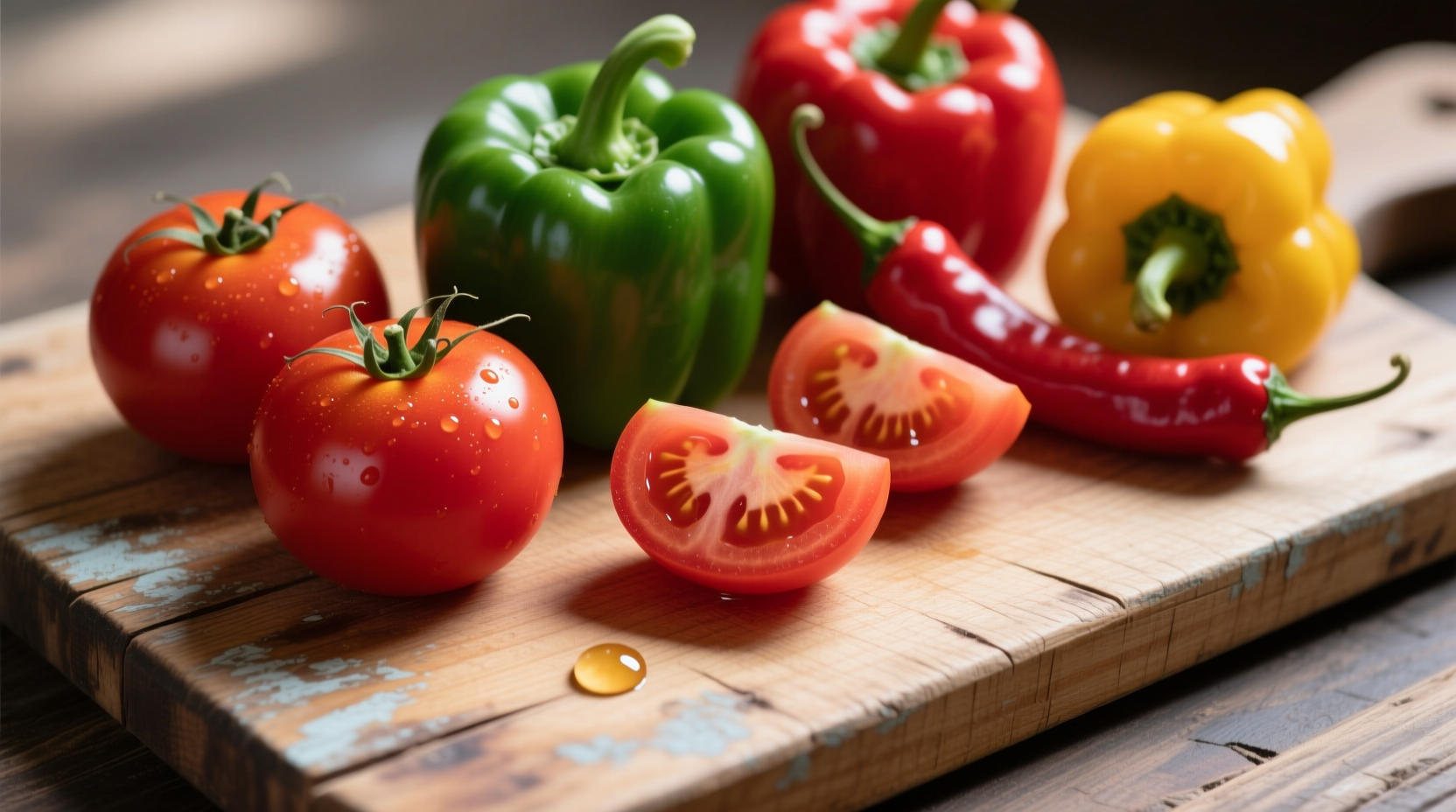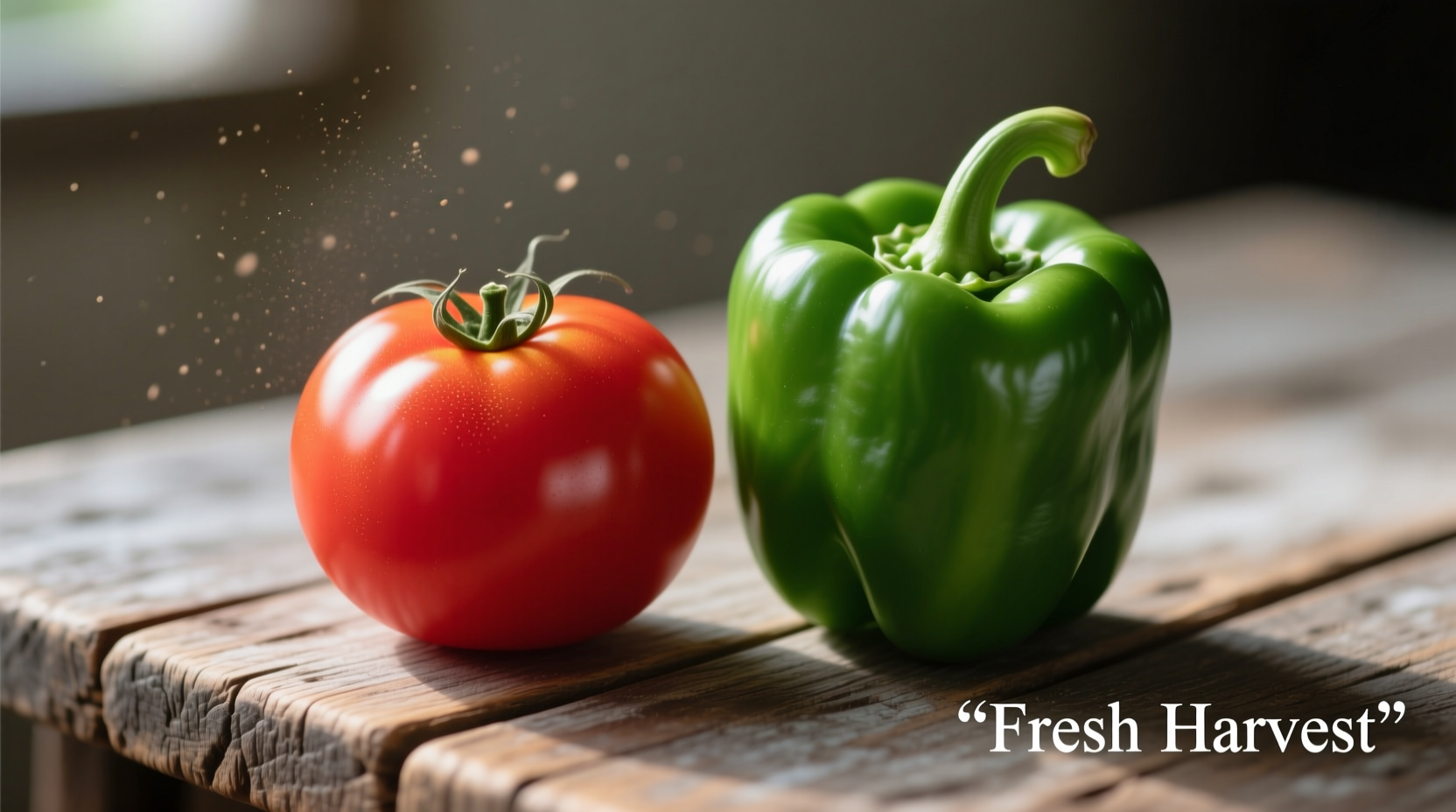When home cooks search for "tomato pepper," they're usually seeking guidance on combining these two kitchen staples. While no single "tomato pepper" variety exists, the relationship between tomatoes and peppers forms the foundation of flavor in cuisines worldwide. This guide reveals exactly how to leverage their complementary characteristics for better cooking results.
Why Tomatoes and Peppers Make the Perfect Culinary Pair
Tomatoes and peppers belong to the nightshade family (Solanaceae), sharing botanical characteristics that explain their natural flavor compatibility. Tomatoes provide bright acidity and natural sweetness, while peppers contribute varying heat levels and earthy notes. This combination creates what chefs call "flavor layering" - where multiple taste dimensions work together rather than competing.
According to flavor chemists at the University of California, Davis, the volatile compounds in peppers (capsaicinoids) interact with tomatoes' glutamic acid to enhance umami perception. This scientific synergy explains why the pairing feels so intuitively right across diverse culinary traditions.
| Pepper Variety | Heat Level (Scoville) | Best Tomato Pairing | Ideal Culinary Application |
|---|---|---|---|
| Bell Peppers | 0 SHU | Roma tomatoes | Stuffed peppers, ratatouille |
| Jalapeños | 2,500-8,000 SHU | Cherry tomatoes | Salsas, grilled skewers |
| Poblano | 1,000-2,000 SHU | Beefsteak tomatoes | Chiles en nogada, roasted sauces |
| Serrano | 10,000-23,000 SHU | Heirloom tomatoes | Pico de gallo, ceviche |
| Habanero | 100,000-350,000 SHU | Sun-dried tomatoes | Caribbean stews, hot sauces |
Historical Context: How This Pairing Shaped Global Cuisines
The culinary marriage of tomatoes and peppers originated in Mesoamerica, where both plants evolved. Archaeological evidence from the Smithsonian Tropical Research Institute shows that pre-Columbian civilizations in modern-day Mexico combined wild tomatoes with native chili varieties as early as 6000 BCE. When Spanish explorers introduced these ingredients to Europe in the 16th century, they revolutionized Mediterranean cooking.
"The tomato-pepper combination created entirely new flavor paradigms," explains Dr. Elena Martinez, ethnobotanist at the National Autonomous University of Mexico. "Indigenous communities had already developed sophisticated techniques for balancing their natural properties long before European contact."

Practical Pairing Guide for Home Cooks
Understanding the flavor chemistry helps you make better pairing decisions. Here's how to apply this knowledge in your kitchen:
Matching Acidity and Heat
Tomatoes' natural acidity (pH 4.3-4.9) interacts with capsaicin in peppers. For milder dishes, remove pepper seeds and membranes where most heat concentrates. When using highly acidic tomatoes like Campari, pair with medium-heat peppers (jalapeños, poblanos) to avoid overwhelming bitterness.
Timing Matters: When to Add Each Ingredient
Culinary science reveals that adding peppers early develops deeper flavor complexity, while adding them later preserves brighter heat notes. For tomato-based sauces:
- For rich, mellow heat: Sauté peppers with aromatics before adding tomatoes
- For vibrant, fresh heat: Stir in finely diced peppers during the last 5 minutes of cooking
- For balanced flavor: Use half the peppers early and half late in the cooking process
Regional Pairing Traditions Worth Trying
Global cuisines have perfected specific tomato-pepper combinations through centuries of refinement:
- Mexican cuisine: Roasted poblano peppers with vine-ripened tomatoes create the base for chiles en nogada
- Italian cuisine: Sweet bell peppers and San Marzano tomatoes form the foundation of arrabbiata sauce
- Thai cuisine: Bird's eye chilies with cherry tomatoes provide the signature balance in som tum (green papaya salad)
- Moroccan cuisine: Preserved lemons with roasted red peppers and tomatoes create complex tagine bases
Common Mistakes to Avoid
Even experienced cooks make these errors when combining tomatoes and peppers:
- Overlooking ripeness: Underripe tomatoes lack sufficient sugar to balance pepper heat. Wait until tomatoes develop full color before pairing with medium-hot peppers.
- Incorrect heat management: Adding all peppers at once creates one-dimensional heat. Layer different pepper varieties for complex flavor profiles.
- Ignoring cooking vessel chemistry: Cooking acidic tomato-pepper combinations in reactive metals (aluminum, copper) can create metallic flavors. Use stainless steel, enameled cast iron, or ceramic instead.
Three Simple Recipes to Master the Pairing
Quick Roasted Tomato-Pepper Salsa
Combine 4 roasted Roma tomatoes, 2 roasted jalapeños (seeds removed), 1/2 red onion, and cilantro. The roasting process caramelizes natural sugars, creating a balanced sweet-heat profile perfect for chips or grilled meats.
Mediterranean Stuffed Peppers
Fill bell peppers with a mixture of cooked quinoa, diced tomatoes, feta cheese, and fresh herbs. Bake until peppers are tender-crisp. The tomatoes' acidity cuts through the richness while the peppers provide structural integrity.
Latin American Tomato-Pepper Soup
Sauté 1 diced poblano pepper and 1 diced yellow onion until soft. Add 4 cups vegetable broth, 2 cups fire-roasted tomatoes, and 1 tsp cumin. Simmer 20 minutes, then blend until smooth. The poblano's mild heat complements tomatoes' sweetness without overwhelming.
Storage and Preparation Tips
Proper handling preserves the delicate balance between these ingredients:
- Store tomatoes at room temperature away from direct sunlight - refrigeration damages flavor compounds
- Keep peppers in the crisper drawer with high humidity settings
- When prepping, cut tomatoes first to avoid transferring capsaicin to your hands
- Roast peppers over open flame for deeper flavor before incorporating into tomato dishes











 浙公网安备
33010002000092号
浙公网安备
33010002000092号 浙B2-20120091-4
浙B2-20120091-4